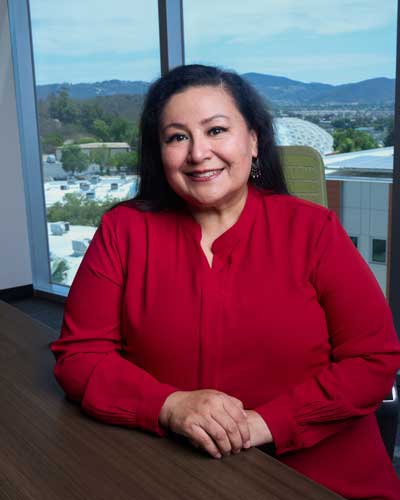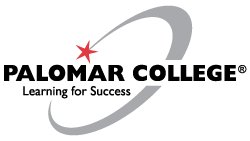Palomar College has a history rich in tradition and educational achievements. On January 15, 1946, registered voters in the Vista Unified School District, the Fallbrook Union School District, and the Escondido Union High School District voted 714 to 417 in favor of establishing a “junior college” in the North San Diego County area. Under state law, the San Diego County Superintendent of Schools appointed five persons as members of the first Governing Board for the new college. The Governing Board hired the first college president in 1946, Dr. Daniel C. McNaughton, supported by a director, a dean of students, and nine faculty members. Located on the Vista High School campus, Palomar College opened its classroom doors on September 23, 1946, with exactly 100 students enrolled in classes in science, mathematics, music, art, social sciences, commerce, English, physical education, and foreign languages.
Today, Palomar College is a public, two-year community college serving a large student body of diverse ages, ethnicities, and lifestyles. The District’s 200-acre main campus is located at 1140 West Mission Road in San Marcos. The San Marcos campus, Education Centers, and five additional sites serve a District covering 2,555-square-miles ranging from urban to agricultural areas of North San Diego County.
The Escondido Center is located on eight acres in the heart of Escondido, the North Education Center is located on an 82-acre property in Fallbrook, and the South Education Center is located on 27 acres in Rancho Bernardo, that includes a large building and associated parking structure. The five education sites are located in Camp Pendleton, Ramona, Fallbrook High School, and the Public Safety Training Center.
Palomar College constitutes a single-college district, and it is the largest single community college district in San Diego County. Palomar College borders seven other community college districts: South Orange County, Mt. San Jacinto, Desert, Imperial Valley, Grossmont-Cuyamaca, San Diego, and Mira Costa.
Palomar College has five academic divisions: (1) Arts, Media, and Business Administration; (2) Career, Technical, and Extended Education; (3) Languages and Literature; (4) Mathematics, Sciences, and Engineering; and (5) Social and Behavioral Sciences. The college offers more than 300 credit degree and certificate programs within those five divisions and noncredit courses. At Palomar, students have the opportunity to participate in a vibrant college life that includes free art and cinema series, 34 academic and social campus organizations, 21 competitive intercollegiate sports teams for men and women, and dozens of music, theatre, and dance performances.
In the November 2006 General Election, voters approved an educational facilities improvement measure (Proposition M), which provides the majority of the funding for the College’s $1 billion construction and remodel plan. The first major step in the implementation of this plan was realized with the completion of the Natural Sciences Building, which opened for the Fall 2007 semester. This is an exciting time for students, faculty, staff, and administration at Palomar College. The vision in the Master Plan 2022 has moved to reality as the planning, design, and construction of several instructional and support facilities have been completed. Two Education Centers were opened in the summer of 2018: The South Education Center in Rancho Bernardo and the North Education Center in Fallbrook. Master Plan 2022 is transitioning Palomar College into its next generation as an outstanding institution in higher education committed to the learning success of its students and responsive to the changing needs of its diverse community.



